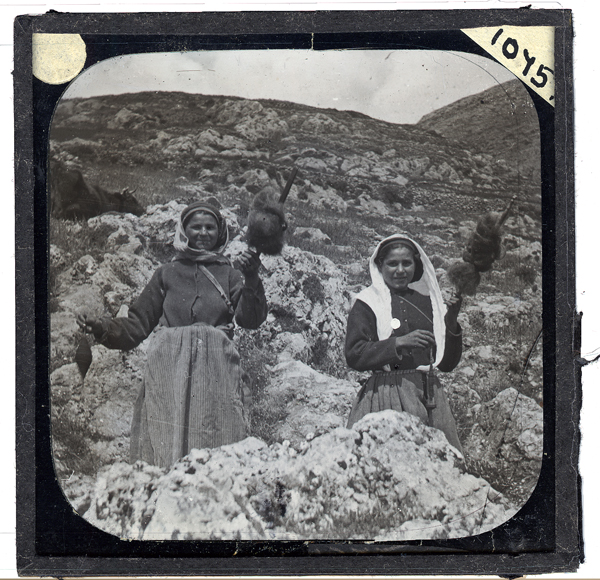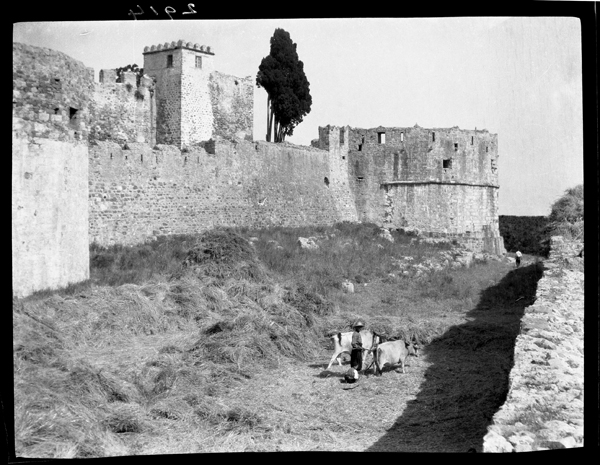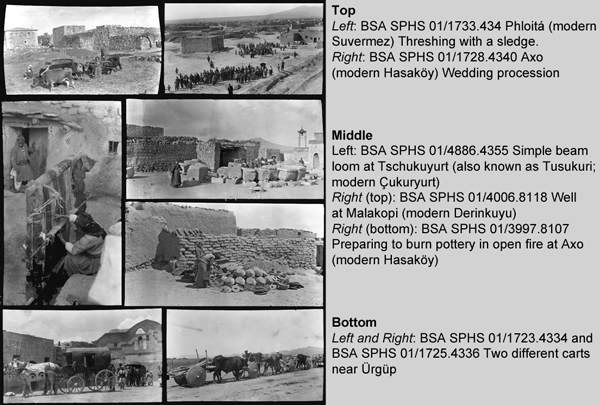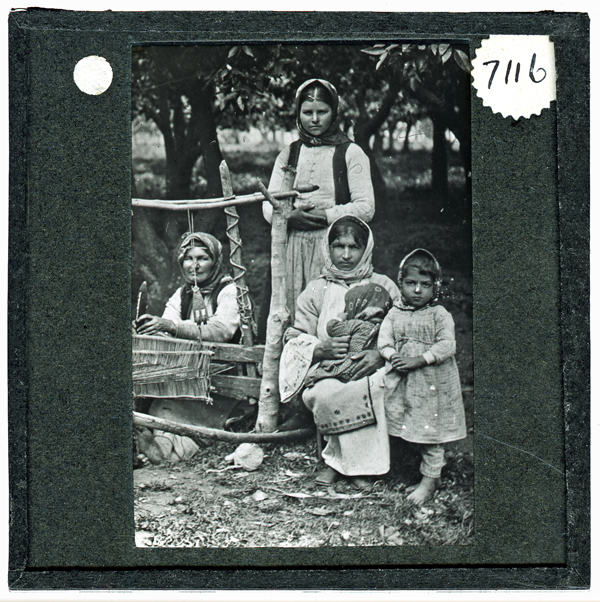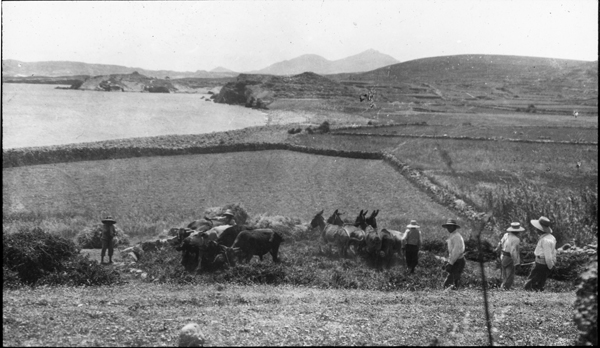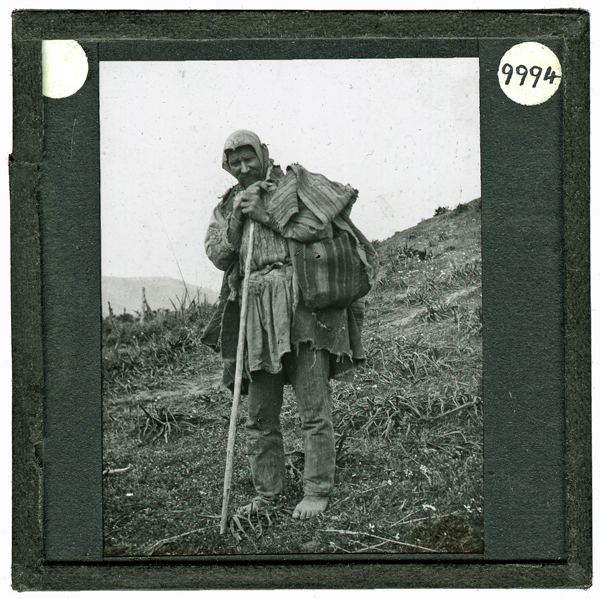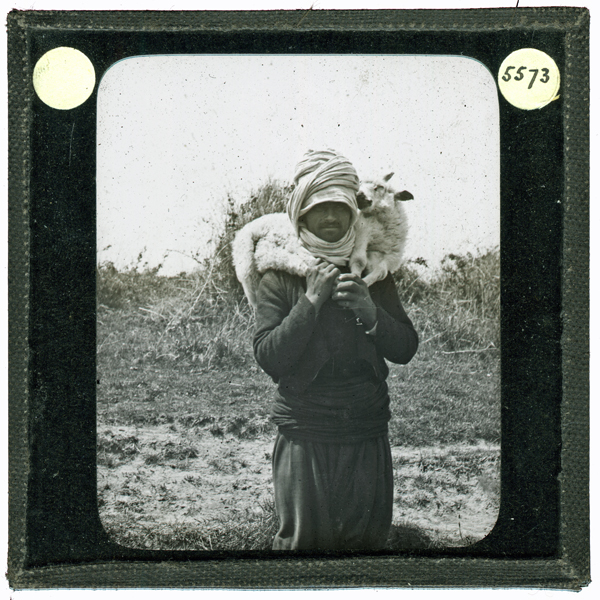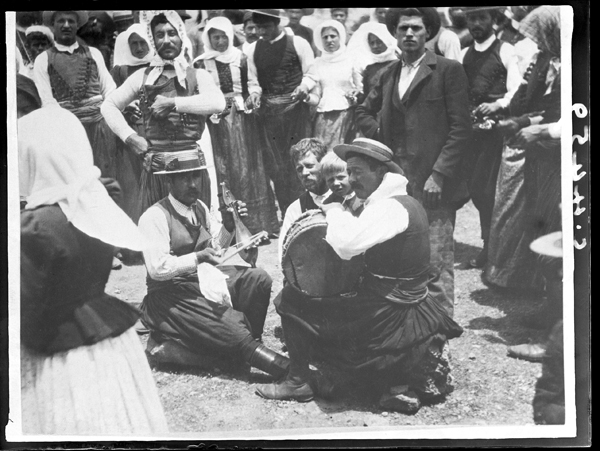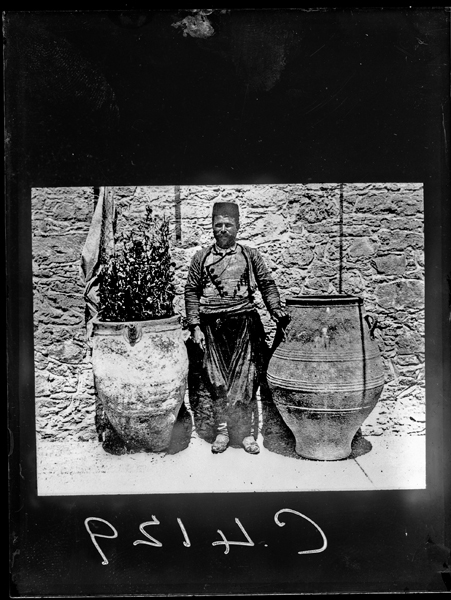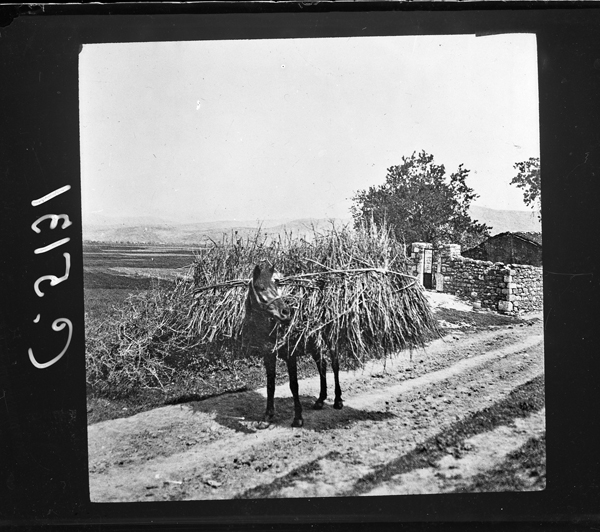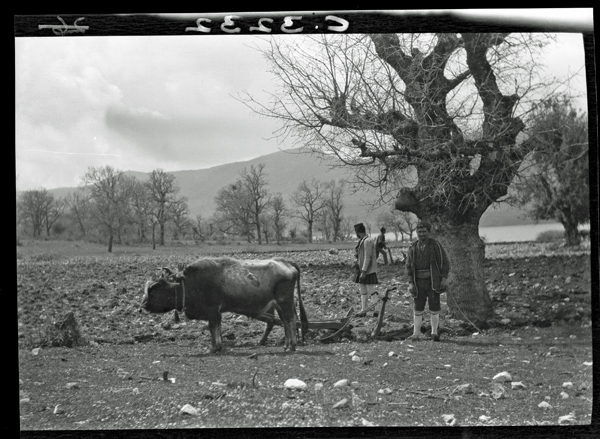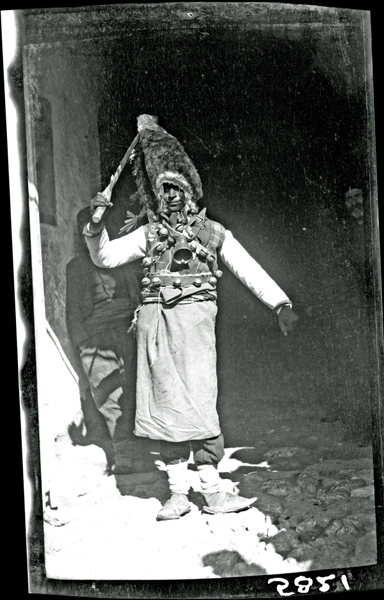Relics of the Past: Scenes from ‘Modern’ Life in the SPHS Image Collection
Scattered throughout the photographs in the BSA SPHS image collection are scenes from modern life, primarily in Greece, but extending into neighbouring countries. These are not modern in the current sense, but contemporary with the time they were photographed – anywhere between the late 19th century up until the interwar years of the 20th century. Some were taken with the express purpose of recording ‘traditional’ life. Others unintentionally captured an aspect of contemporary activity while composing photographs of ancient or historical monuments such as threshing in the intended subject of the ditch of the upper kastro of Mytiline, as indicated in the caption of the photograph below.
In the last BSA Archive Story dealing the SPHS Image collection, Documenting Modern Greek Dialects: travels of R.M. Dawkins & W.R. Halliday in Central Anatolia 1909-1911, we saw that there was an interest on the part of R.M. Dawkins and particularly W.R. Halliday in activities of everyday life in the remote Greek villages of Central Anatolia. They included scenes of threshing, weaving, pot firing in open kilns, water sources, methods of transport, local people and a wedding procession. An ethnographic account of the wedding was published by W.R. Halliday in the journal Folklore.
Recording ethnographic scenes of everyday Greek life, like those photographs by Dawkins and Halliday, was part of a trend in the latter part of the 19th and the beginning of the 20th centuries. The 1913 SPHS slide catalogue included a simple list of slides available to illustrate what they called Modern Greek Life. The list included scenes of spinning and weaving, ploughing and threshing, superstitions, festivals and religious activity, games and methods of transport.
A specific category titled Greek Peasant Types was published in the 1915 accessions to the slide catalogue. This process of categorizing images reflects contemporary ideas and must have had some meaning, perhaps showing the belief in a direct connection between physical and culture characteristics. These images focused on figures representing shepherds or shepherdesses, miscellaneous peasants, klephts, priests, etc.
Most significant, however, was the 19th-century concept of continuity – relics or survivals – of ancient social life and practices in the present. This concept of continuity was notably promoted by the pioneering scholar of Greek folklore (laographia), Nikolaos Politis, and held by many British classicists and archaeologists of the time. The Irish classical scholar, J.P. Mahaffy encapsulated this idea in his 1876 travel book, Rambles and Studies in Greece: “Everywhere the modern Greek town is a mere survival of the old.” These survivals were linked to classical literature, cult and myth such as the kriophoros (with a modern example shown below). Contemporary story telling seen in an improvising poet at Palaikastro c. 1902 had resonances with the Homeric tradition of oral epic. Others sought continuity by comparing modern examples with ancient figurines and iconography, like Gow in his 1914 article on the ancient plough, or a direct comparison with ancient and modern storage pots.
In 1932, a separate annotated slide list Modern Greek Country Life appeared, available for SPHS members. Annotated slide lists and pre-scripted illustrated lectures were part of a SPHS initiative to support and encourage the Classics in response to changes in the curriculum that challenged the supremacy of the Classics, particularly Greek, after World War I (see Stray 1998 for an informed discussion on the transformation of the Classics in Britain). The Modern Greek Country Life list was broken down into subcategories: Ploughing, Threshing, Shepherds, The Potter, Transport, Spinning and Weaving, and Games (which included Festivals). The categories reflected those in the 1913 list as well as those activities captured by Dawkins and Halliday a decade earlier. It also incorporated the images categorized in both the 1913 the 1915 lists.
An exhibition in Burlington House (London) in 1936 celebrating the first 50 years of the British School at Athens included a section entitled Modern Greek Life. This section used many photographs donated to the SPHS by members of the BSA. The panel below is described in the exhibition’s catalogue as ‘Modern Greek Life: Northern Greek Mumming Plays’, recorded in different places by A.J.B. Wace and R.M. Dawkins. Wace used some of these images in his 1910 article discussing the elements of the worship of Dionysos in modern festivals, just as Dawkins had done in 1906, based on his observations of a carnival play in Thrace.
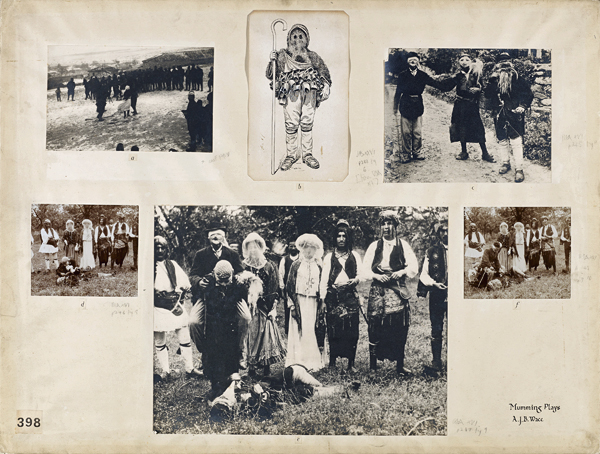
1936 Exhibition panel 398 which is made up of images from the SPHS collection: SPHS 4483, SPHS 4484 and SPHS 5828.
Categorizing is a fundamental way of understanding and controlling knowledge. The SPHS’s Modern Greek Life lists reflected a knowledge based on concepts such as the survival of relics from the past. It also reflected then current folklore categories: material life (domestic architecture, dress, craft and agricultural production, etc.), social life (games, festivals) and spiritual life (superstitions, religious activities). In the context of the SPHS collection, these seemingly quaint historical photographs of Modern Greek Life are, in fact, manifestations of concepts embodied in the British discipline of Hellenic Studies in the late 19th and early 20th centuries.
Deborah Harlan
Honorary Research Fellow
Department of Archaeology
Sheffield University
Images from the BSA-SPHS collection are available on the BSA’s Digital Collections page.
Click here for more BSA Archive Stories.
Further Reading:
Dawkins, R.M. 1906. ‘The Modern Carnival in Thrace and the Cult of Dionysus’, Journal of Hellenic Studies 26: 191-206
Gow, A.S.F. 1914. ‘The Ancient Plough’ Journal of Hellenic Studies 34: 249-275
Halliday, W.R. 1912. “A Greek Marriage in Cappadocia” Folklore 23(1): 81-88.
Politis, N. 1909. Σύμμιτκα. Ανακοινώσεις-αγγέλματα. Λαογραφία, Vol. Α’, pp. 156–157.
Stray, C. 1998. Classics Transformed: Schools, Universities, and Society in England, 1830–1960, Oxford.
Wace, A.J.B. 1910. ‘North Greek Festivals and the Worship of Dionysos’, Annual of the British School at Athens 16: 232-253.
